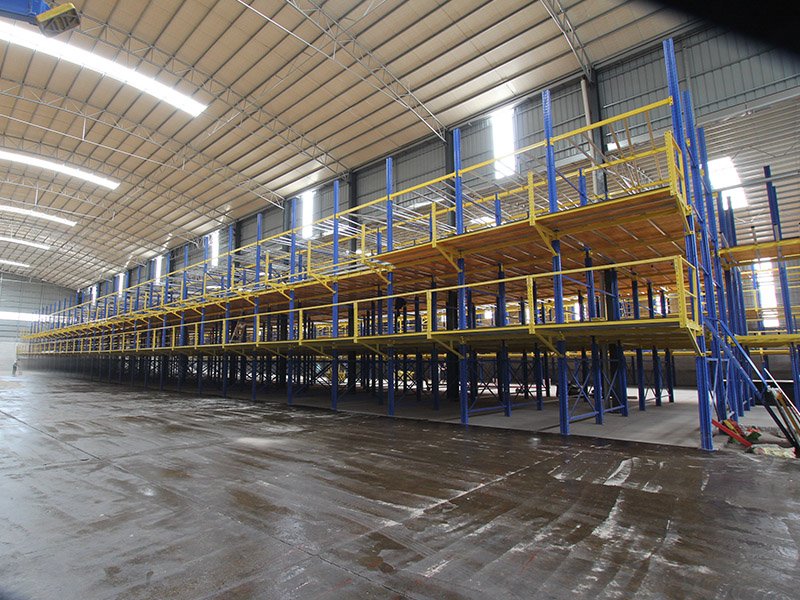Key Considerations When Purchasing Warehouse Shelving
Selecting the right warehouse shelving is critical for optimizing storage efficiency, ensuring safety, and maximizing return on investment. Below are essential factors to evaluate before making a purchase:

1. Define Storage Requirements
- Goods Characteristics:
- Weight and Size: Determine the maximum load capacity and dimensions of items (e.g., pallets, boxes, long materials).
- Fragility: For delicate items, prioritize shelving with protective features (e.g., cantilever racks for pipes, anti-slip surfaces).
- Access Frequency: High-turnover goods may require easy-access shelving (e.g., selective pallet racks), while bulk storage suits dense systems (e.g., drive-in racks).
- Inventory Volume: Estimate current and future storage needs to avoid under- or over-investing in shelving.
2. Choose the Right Shelving Type
Match shelving to your operational needs:
- Selective Pallet Racks: Ideal for quick access to diverse SKUs.
- Drive-in/Drive-through Racks: Maximize density for bulk storage of homogeneous goods.
- Cantilever Racks: Perfect for long, irregularly shaped items (e.g., lumber, pipes).
- Shuttle Racks: Automated systems for high-density, high-efficiency storage.
- Mezzanine Systems: Add vertical workspace for small-item storage or offices.
3. Material and Durability
- Steel Quality: Opt for high-grade, corrosion-resistant steel (e.g., galvanized or powder-coated finishes), especially for humid or cold environments.
- Load Capacity: Ensure the shelving’s static and dynamic load ratings exceed your heaviest inventory weights.
- Welding and Joints: Check for precision welding and reinforced connections to prevent structural failures.
4. Space Utilization and Layout
- Warehouse Dimensions: Measure ceiling height, floor space, and column positions to design an efficient layout.
- Aisle Width: Narrow aisles save space but require compatible equipment (e.g., narrow-aisle forklifts).
- Vertical Expansion: Utilize height with adjustable beams or high-bay racks (up to 30+ meters).
5. Safety and Compliance
- Seismic and Load Standards: Ensure racks meet local safety regulations (e.g., OSHA, EN, or AS 4084 standards).
- Collision Protection: Install guardrails, column protectors, and anti-collision nets to prevent accidents.
- Fire Resistance: Verify fire ratings if storing flammable goods.
6. Supplier and Customization
- Reputable Suppliers: Choose vendors with proven expertise, certifications, and positive client reviews.
- Custom Solutions: For unique needs (e.g., irregular layouts, specialized loads), opt for customizable shelving systems.
- Warranty and Support: Prioritize suppliers offering warranties, installation services, and post-purchase maintenance.
7. Budget and Cost-Effectiveness
- Total Cost of Ownership: Factor in installation, maintenance, and potential future expansions.
- ROI Calculation: Dense storage systems (e.g., shuttle racks) may have higher upfront costs but save long-term space and labor expenses.
8. Ease of Assembly and Maintenance
- Modular Design: Prefer systems that allow easy reconfiguration as needs evolve.
- Low-Maintenance Materials: Rust-resistant coatings reduce upkeep in humid or cold storage environments.
9. Future Scalability
- Expandable Systems: Select shelving that can grow with your business (e.g., bolt-free racks for quick adjustments).
- Technology Integration: Ensure compatibility with automation (e.g., AGVs, RFID tracking) for future upgrades.
10. Test Before Purchase
- Request Samples or Demos: Evaluate build quality and functionality firsthand.
- Case Studies: Review how similar businesses successfully use the shelving.
By addressing these factors, you can select shelving that enhances operational efficiency, ensures safety, and adapts to evolving business needs. Always balance immediate requirements with long-term flexibility to avoid costly replacements.

